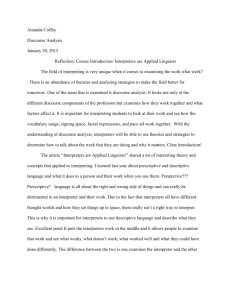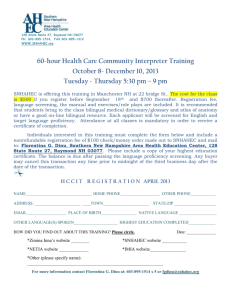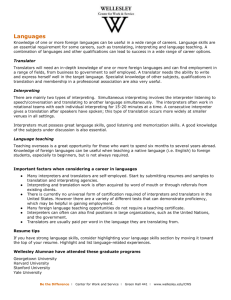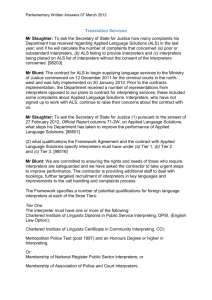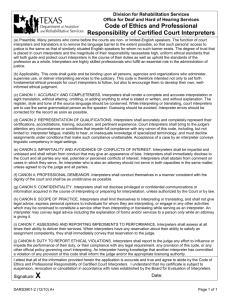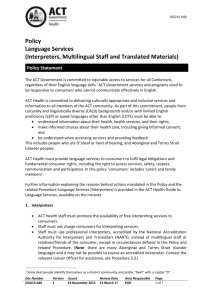Computer Lab Writing Assignment
advertisement
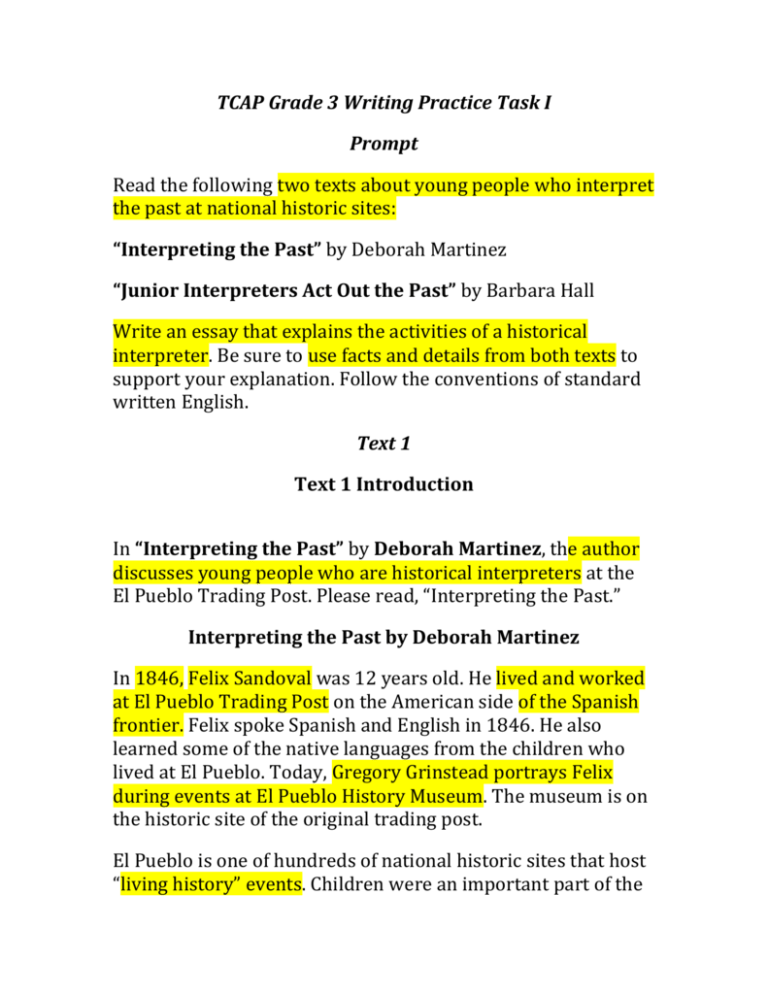
TCAP Grade 3 Writing Practice Task I Prompt Read the following two texts about young people who interpret the past at national historic sites: “Interpreting the Past” by Deborah Martinez “Junior Interpreters Act Out the Past” by Barbara Hall Write an essay that explains the activities of a historical interpreter. Be sure to use facts and details from both texts to support your explanation. Follow the conventions of standard written English. Text 1 Text 1 Introduction In “Interpreting the Past” by Deborah Martinez, the author discusses young people who are historical interpreters at the El Pueblo Trading Post. Please read, “Interpreting the Past.” Interpreting the Past by Deborah Martinez In 1846, Felix Sandoval was 12 years old. He lived and worked at El Pueblo Trading Post on the American side of the Spanish frontier. Felix spoke Spanish and English in 1846. He also learned some of the native languages from the children who lived at El Pueblo. Today, Gregory Grinstead portrays Felix during events at El Pueblo History Museum. The museum is on the historic site of the original trading post. El Pueblo is one of hundreds of national historic sites that host “living history” events. Children were an important part of the workforce at these historic sites. Children today take part as historical interpreters. They dress and speak and act, as their character would have done long ago. Catie Blickhahn, 16, and Becky Blickhahn, 14, portray Mormon girls who lived near El Pueblo for the winter of 1846. (At her age in 1846, Catie would have been married.) Today, Catie loves to make tortillas at the museum. Becky learned the skills of a dyer. She has fun demonstrating her skills by dyeing her apron different colors. The girls show frontier skills to schoolchildren who visit the museum on school trips. Erica Fox Espinosa has been an interpreter since she was very young. She portrays the Spanish and Mexican girls. She demonstrates making cornhusk dolls for trading post public events that recreate the past. Erica points out that most women could shoot a gun and ride a horse and that most men could bake bread and sew. Josh Quintana helps his grandmother bake bread in the great outdoor ovens called hornos. He knows how to fire up the horno to bake bread or cook venison1. Just like the children whose lives they portray, these young historical interpreters learn their skills by working with the adults in the community. Young historical interpreters add to the experience of visitors at historical sites. They also say that they learn more than could ever be taught in a classroom. “It’s worth the time and energy that it takes to learn about the past times,” says Erica, “and it’s fun!” 1. deer meat Text 2 Text 2 Introduction In “Junior Interpreters Act Out the Past” by Barbara Hall, the author discusses the daily lives of historical interpreters who volunteer in Colonial Williamsburg. Please read “Junior Interpreters Act Out the Past.” 1. “I was scared to death when I first went to Williamsburg for training,” says Caroline Hollis, a 2. junior interpreter. “But I decided to be brave and do something I don’t usually do. I walked up 3. and talked to a girl who looked nice. Once we became friends, I wasn’t scared anymore.” 4. Both Caroline Hollis and Seanan Maranzano, another junior interpreter, have worked for several 5. years at the Geddy House and Foundry, on the city’s main street…. 6. Caroline and Seanan work on weekends and after classes during the school year, and daily 7. during the summer. . . . Some perform colonial dances. Some interpreters portray real children 8. who lived in the town. Others, like Seanan and Caroline, discuss and demonstrate family life and 9. activities in the 1770’s. 10. During the summer and on weekends, Seanan wakes up at 9 o’clock. “It doesn’t take me 11. That long to get ready. I either wear breeches2 or a pair of trousers, an old-fashioned shirt, and a 12. waistcoat (a vest) on top 13. “I can get to the Geddy House at about 10’ o clock. I do two hours of interpreting in the dining room 14. or outside in the yard. After that, I get a lunch break. Then depending on the day and the 15. weather, we might play cricket3 out on the lawn from about 1 to 3 o’ clock. Or, I go to work at the 16. Foundry.” 17. Because her costume is more complicated, Caroline wakes up earlier than Seanan. “I get up at 18. 7:30 or 8, eat breakfast, shower, and put my contacts in,” she says. It takes me awhile to get 19. into my clothes. I usually wear a shift, a plain white thing. Then comes a petticoat with an 20. over-petticoat (skirt) over it. Next is a short jacket— basically, it’s a shirt that ties in front. Then I 21. have an apron on top of everything.” 22. Both Caroline and Seanan say their work has given them a better understanding of the American 23. History they study at school. They also say that they have changed since becoming junior 24. Interpreters, says Seanan. “It’s helped me in public speaking. I’m much better at talking to large 25. groups of people.” 26. A junior interpreter is a costumed guide between the ages of 10 and 18. Williamsburg 27. interpreters help bring colonial times to life for visitors. Willaimsburg junior interpreter 28. program began about 25 years ago with five girls silently performing needlework. Today there 29. are 125 junior interpreters demonstrating games and chores, and answering visitors’ questions. 2. short pants that end at the knee 3. a game played on a big field using bats and a ball



